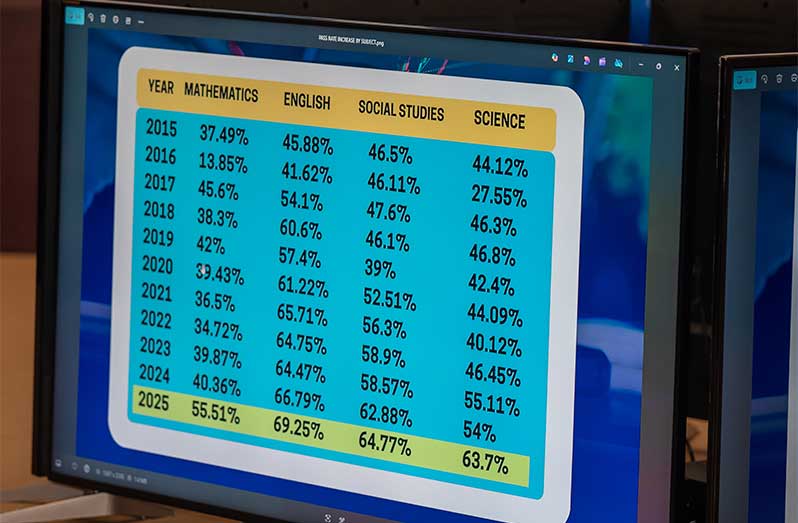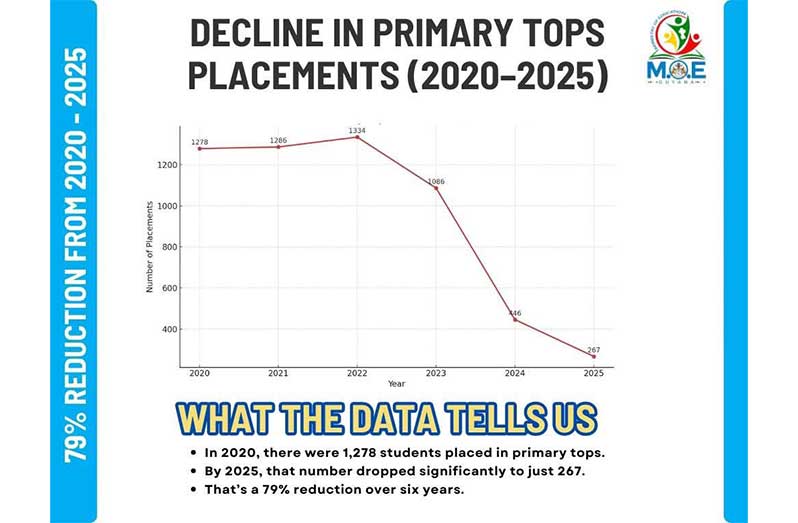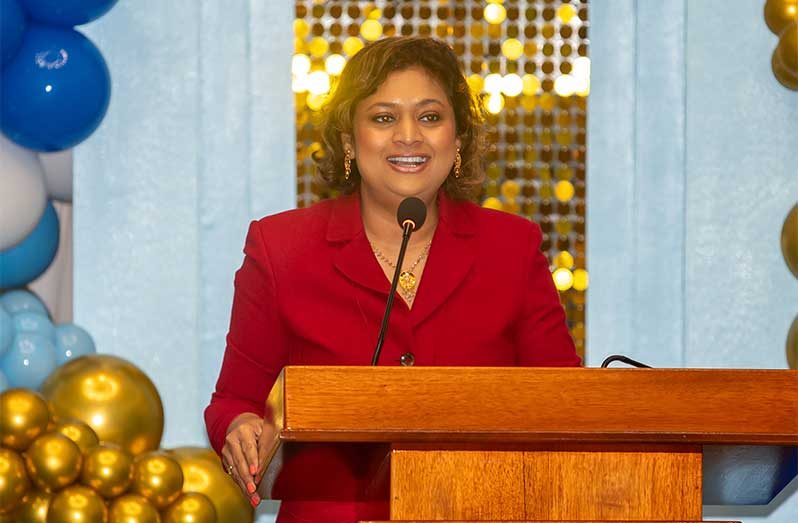– significant improvement seen in all NGSA subject areas
– as gov’t continues investments in education
EDUCATION Minister, Priya Manickchand, has announced that Guyana has done the best it has ever done, with significant improvements being recorded at this year’s National Grade Six Assessment (NGSA).
Manickchand made these remarks on Wednesday during the 2025 NGSA results ceremony, which was held at the Arthur Chung Conference Centre.
During her address, she stated, “Guyana has done the best that it has ever done and by far, we’re not talking about a two per cent here and a one per cent there. We have moved the overall pass rate from 49 per cent to 63 per cent.”
This, she said, highlights that children across the country are doing better overall.
It was then that Manickchand provided a breakdown of the performance improvements for all subject areas from 2015 to 2025.
In Mathematics in 2015, she stated that just 37.9 per cent of pupils were able to achieve 50 per cent and above on the examination; that figure is now 55.51 per cent.
“That’s the highest this country has ever seen. It is the first time Guyana has crossed 50 per cent [in mathematics] and I am extremely proud of all the efforts that went into that,” Manickchand added.
For English, in 2015, 45.88 per cent of pupils scored 50 per cent and above, and this year that figure stands at 69.25 per cent. In Social Studies, it has moved from 46.5 per cent in 2015 to 64.77 in 2025.
In Science, the percentage of pupils scoring 50 per cent and above in 2015 was 44.12, while in 2025 it now stands at 63.7 per cent.
TARGETED INVESTMENTS
With these noteworthy improvements recorded, Manickchand attributed them to targeted investments being made in the country’s education sector.
The education minister remarked that the government ensured that focus was placed on eradicating the learning loss brought on by the COVID-19 pandemic. She said that this learning loss was predicted by UNICEF and the World Bank, among other international institutions.

“Guyana has defied both of those predictions again, not by matter but by constant conscious investment led by a president who understands the value of education all across this land for every single child,” she remarked.
She noted that the government took action and consolidated the curriculum, bringing it to a level that would accommodate the loss that children had suffered for the two years they were out of classrooms.
Some of the measures taken, she said, included the preparation of concise notes in the various subject areas into one document for the students to benefit from.
Additionally, the government rolled out its breakfast programme to provide breakfast every day for pupils from grades three to six, which she said played a role in boosting attendance at that level.
Further, an online quiz was created on the ministry’s website, which contained questions relevant to the NGSA level and was marked and returned immediately to students.
Also, the learning channel was expanded across the hinterland regions, and that coverage now stands at 97 per cent, along with the establishment of a radio channel dedicated to teaching and learning.
The national grade five assessment was also implemented to diagnose what pupils knew and didn’t know in the lead-up to NGSA, so there was close to a year to focus on those areas.
Meanwhile, Manickchand indicated that the government has also invested in the training of teachers and has trained or is currently training 9,000 teachers across the country.
“That’s just some of what we did. That is the investment that has shown the impact we’re seeing here today,” she said.
Meanwhile, the minister noted that on entry to secondary schools, when they entered office in 2020, just around 586 children were being placed in the top five national schools.
However, the government has also focused on consciously expanding those schools, Queen’s College, The Bishops High, St Stanislaus College, St Roses and St Joseph High School.
With the expansion, she said that they are able to place over 900 students in those schools in 2025.

Additionally, at that time, over 1,200 students were placed into primary tops.
“A primary top is a primary school where you write your NGSA, and there is no secondary school to go to. So you go back to the primary school and you do some secondary work with untrained teachers for secondary [school],” she explained.
However, this year, the number of students being placed in primary tops has reduced significantly, with just 267 students being placed there this year.
This number, she remarked, will be reduced to zero by 2026 as many of the schools being constructed across the country should be completed by that time.
“That’s how important building schools would be to our children,” she expressed.
Manickchand stated that the PPP/C administration will continue to make targeted investments in education to ensure that universal education across all levels is achieved.



.jpg)










